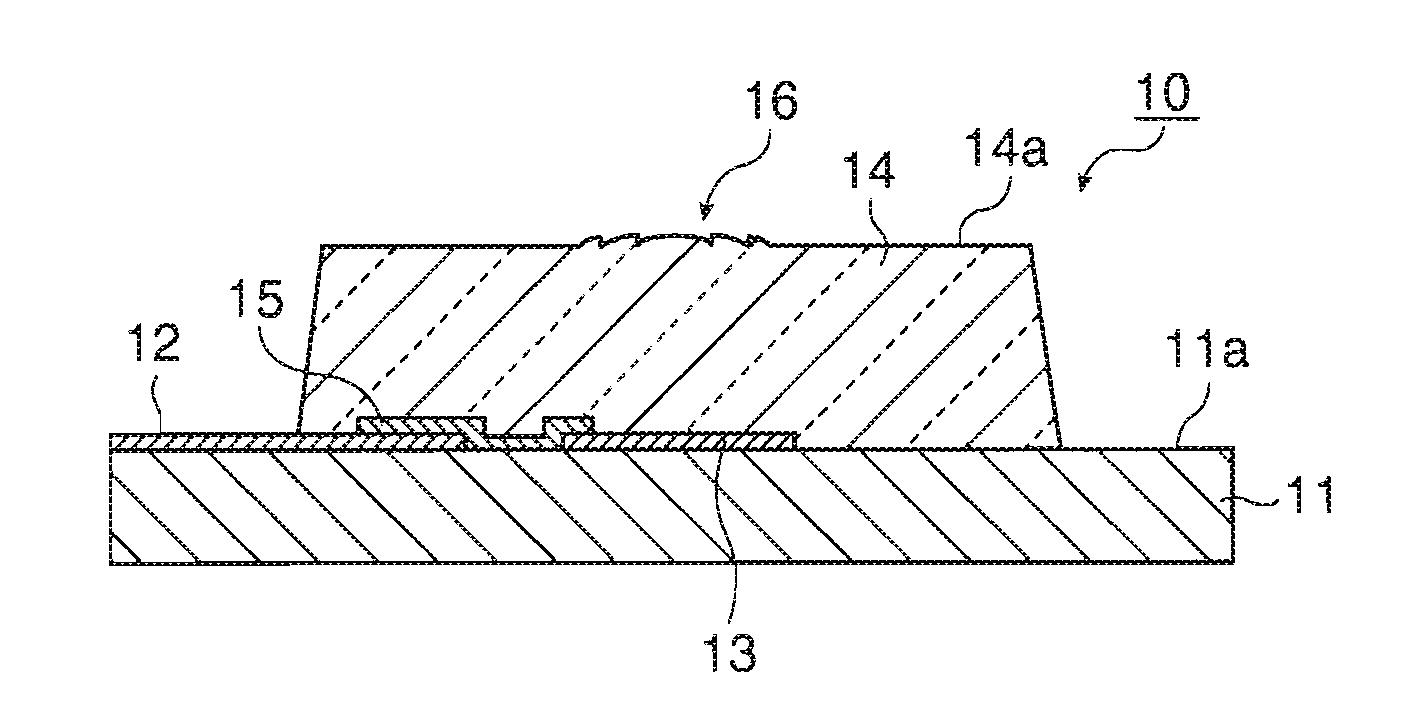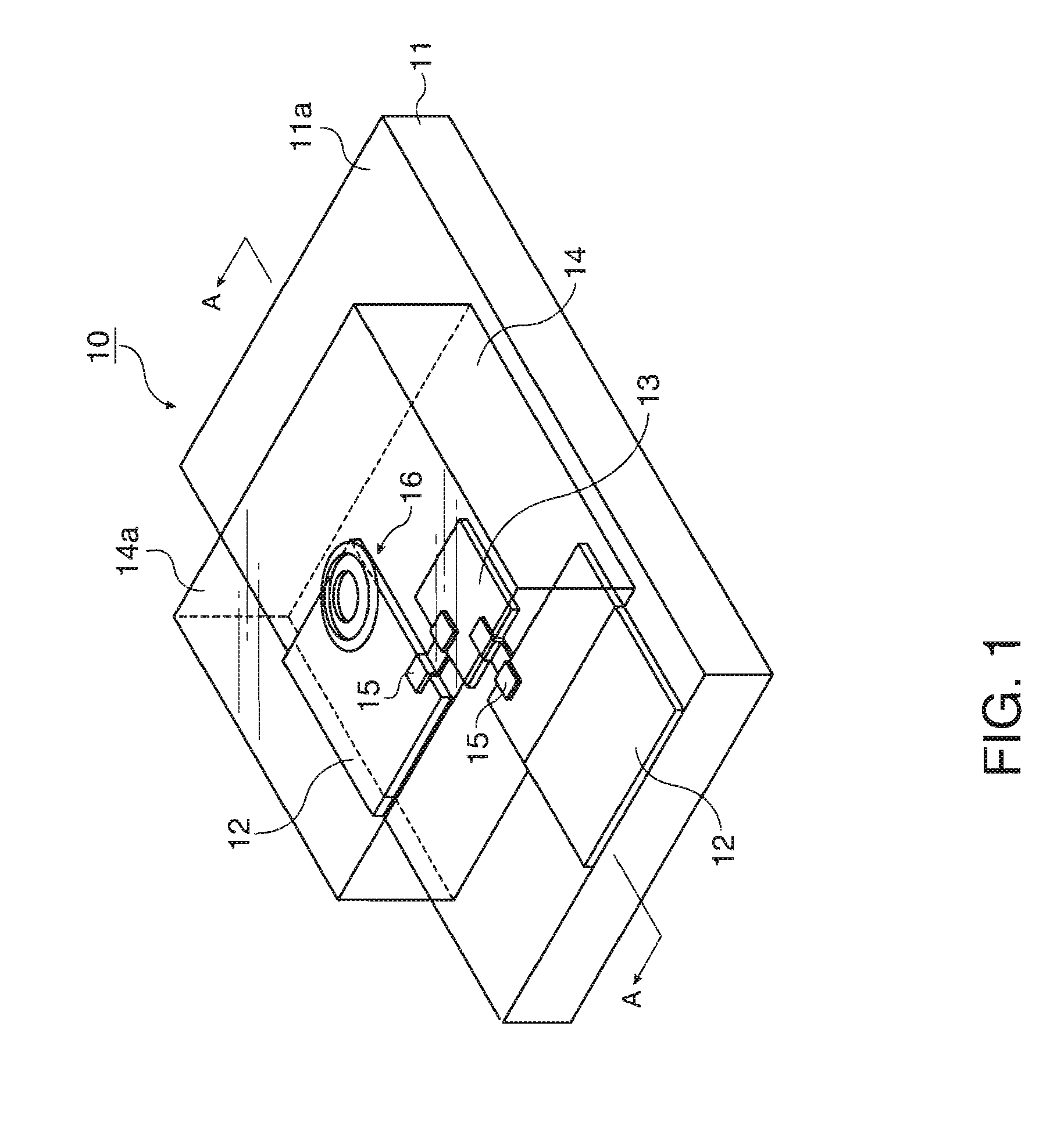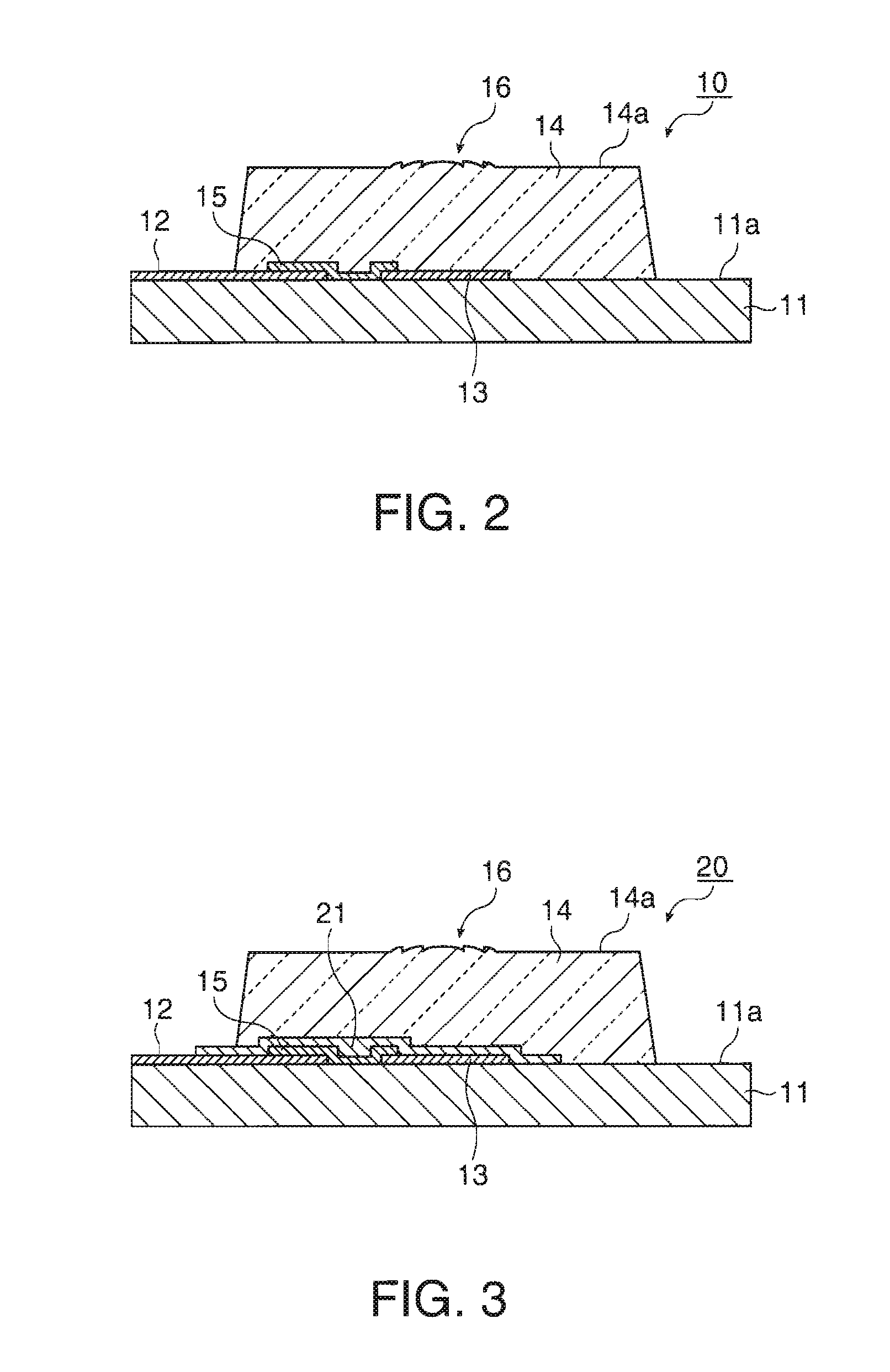Optoelectric composite substrate and electronic apparatus
a technology of optoelectric composite substrates and electronic devices, which is applied in the direction of optical elements, semiconductor lasers, instruments, etc., can solve the problems of difficult to make the planar area of the molded section, the molded section described above cannot be larger than the area, and it is difficult in the fresnel region to convert the laser beam into parallel light or to condense the laser beam
- Summary
- Abstract
- Description
- Claims
- Application Information
AI Technical Summary
Benefits of technology
Problems solved by technology
Method used
Image
Examples
first embodiment
[0060]FIG. 1 is a perspective view showing a substantial part of an optoelectric composite substrate 10 according to a first embodiment of the invention, and FIG. 2 is a cross-sectional view along the A-A line shown in FIG. 1. As shown in FIGS. 1 and 2, the optoelectric composite substrate 10 is configured including a substrate 11, a printed wiring pattern 12 formed on a side of the front face 11a of the substrate 11, a low-profile optical element 13 mounted on the side of the front face 11a of the substrate 11, and a lens mold 14 formed on the side of the front face 11a of the substrate 11 so as to cover the top of the low-profile optical element 13. It should be noted that although in the present embodiment, the case in which the optoelectric composite substrate 10 is a printed wiring board with very little flexibility is explained as an example, it can be a flexible printed wiring board (FPC) with much flexibility.
[0061]As the substrate 11, a substrate made at least of, for examp...
second embodiment
[0082]FIG. 4 is a cross-sectional view showing a substantial part of the optoelectric composite substrate according to a second embodiment of the invention. It should be noted that the components corresponding to the components provided to the optoelectric composite substrate 10 according to the first embodiment explained using the FIGS. 1 and 2 are denoted with the same reference numerals. As shown in FIG. 4, an optoelectric composite substrate 30 is configured including a substrate 31, the low-profile optical element 13 mounted on the side of the front face 31a of the substrate 31, and a lens mold 34 formed on the side of the front face 31a of the substrate 31 so as to cover the top of the low-profile optical element 13. It should be noted that although wiring patterns corresponding to the printed wiring patterns 12 provided to the optoelectric composite substrate 10 shown in FIGS. 1 and 2 are not illustrated in the example shown in FIG. 4, these wiring patterns can be formed on t...
third embodiment
[0089]FIG. 5 is a cross-sectional view showing a substantial part of the optoelectric composite substrate according to a third embodiment of the invention. It should be noted that the components corresponding to the components provided to the optoelectric composite substrate 30 according to the second embodiment explained using the FIG. 4 are denoted with the same reference numerals. Comparing an optoelectric composite substrate 40 of the present embodiment shown in FIG. 5 with the optoelectric composite substrate 30 of the second embodiment shown in FIG. 4, they are different from each other in that a new low-profile optical element 43 is mounted on the front face 31a of the substrate 31, and the lens elements 36a, 36b are formed on the front face 34a of the lens mold 34 respectively corresponding to the low-profile optical elements 13, 43. It should be noted that in the present embodiment, it is assumed that the low-profile optical element 13 is a light emitting element such as a ...
PUM
| Property | Measurement | Unit |
|---|---|---|
| thickness | aaaaa | aaaaa |
| thickness | aaaaa | aaaaa |
| thickness | aaaaa | aaaaa |
Abstract
Description
Claims
Application Information
 Login to View More
Login to View More - R&D
- Intellectual Property
- Life Sciences
- Materials
- Tech Scout
- Unparalleled Data Quality
- Higher Quality Content
- 60% Fewer Hallucinations
Browse by: Latest US Patents, China's latest patents, Technical Efficacy Thesaurus, Application Domain, Technology Topic, Popular Technical Reports.
© 2025 PatSnap. All rights reserved.Legal|Privacy policy|Modern Slavery Act Transparency Statement|Sitemap|About US| Contact US: help@patsnap.com



